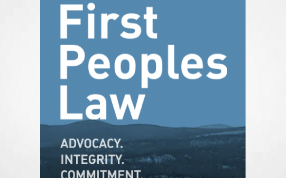The Supreme Court of Canada’s decision in Shot Both Sides marks the end of a decades-long effort on the part of the Blood Tribe to address Canada’s failure to fulfil its outstanding obligation to provide lands as promised under Treaty 7.
The decision raises troubling questions about when and under what circumstances Indigenous peoples can rely on Canadian courts to hold the Crown accountable for breaches of its legal obligations.
What It’s About
The Blood Tribe sued Canada in Federal Court for failure to set aside reserve lands as promised under Treaty 7.
Canada argued the Blood Tribe was out of time because the claim was started after the regular 6-year limitation period had expired. A limitation period refers to the time limit for starting a new legal claim in court. If a claim is started after the time limit has expired, the court cannot hear the claim, regardless of how strong it is.
The Federal Court decided the Blood Tribe could proceed with the claim because treaty rights couldn’t be enforced under Canadian law until the enactment of the Constitution Act, 1982. As such, the limitation period didn’t start until 1982.
The Federal Court of Appeal disagreed. It decided that Canada’s obligations to fulfil the Crown’s treaty promises existed and were enforceable at law prior to 1982. As a result, the Blood Tribe was barred from proceeding with the claim because it had been started after the expiration of the limitation period.
The Blood Tribe appealed to the Supreme Court of Canada. Indigenous organizations that participated as interveners in the appeal argued that provincial limitations legislation should not be used to bar Indigenous peoples from obtaining meaningful, enforceable remedies for breaches of the Crown’s treaty promises.
What the Court Said
The Supreme Court held that treaties were enforceable prior to 1982. As such, the Blood Tribe’s claim was statute-barred because it was commenced after the limitation period expired.
The Court issued a non-binding declaration that the Crown dishonourably breached the treaty land entitlement provisions under Treaty 7. A declaration is a statement made by a court which clarifies the rights or obligations of one party to another, but which does not require the party to take any particular action. According to the Court, the declaration was intended to promote reconciliation and help restore the nation-to-nation relationship between the Blood Tribe and the Crown.
The Court decided it was unnecessary to address the issue of whether limitations legislation should apply in treaty claims.
Why It’s Important
The Supreme Court’s decision affirms that treaty rights flow from the treaties themselves, not the Constitution, and give rise to enforceable obligations under Canadian law.
The decision also confirms what the Blood Tribe has always maintained: Canada breached its sacred treaty promises when it failed to set aside lands under Treaty 7.
Unfortunately, the Court’s decision leaves the Blood Tribe without any means of forcing Canada to fulfill its treaty promise. Instead, the issue of how to rectify the breach has been left in Canada’s hands – the same party that failed to fulfil the treaty promises in the first place.
The decision represents a missed opportunity to clarify whether limitations legislation should be applied to historic breaches of the Crown’s treaty promises. As a result, treaty-based claims remain subject to limitation periods set out under provincial laws, even though in many cases, the treaties pre-date the existence of the provinces themselves.
Critically, this means a First Nation’s ability to obtain an enforceable remedy will vary from province to province. This issue is particularly acute for First Nations who are beneficiaries of treaties which span multiple provinces. Beneficiaries in one province may be subject to different limitation periods than beneficiaries of the same treaty in a neighbouring province.
Looking Ahead
Forty years ago, the Supreme Court in Guerin affirmed that Indigenous peoples’ rights are legally enforceable against the Crown. In doing so, the Court rejected the argument that the rights of Indigenous peoples are “political” such that they cannot give rise to enforceable remedies under Canadian law.
The Guerin decision represented an important step forward towards justice and accountability for the Crown’s historic and ongoing wrongs against Indigenous peoples. It also paved the way for numerous decisions in which courts have provided tangible, concrete remedies for breaches of the Crown’s legal obligations.
The Court’s decision in Shot Both Sides is a step backward. The decision harkens back to a pre-Guerin era, in which the Crown’s treaty promises were treated as moral or political issues, rather than matters which should rightfully be rectified by courts based on enforceable judicial remedies.
Kate Gunn is partner at First Peoples Law LLP. Kate completed her Master of Law at the University of British Columbia. Kate is co-author of Indigenous Peoples and the Law in Canada: Case Commentary.
Contact Kate and connect with her on LinkedIn and Twitter
First Peoples Law is a law firm dedicated to defending and advancing the rights of Indigenous Peoples in Canada. We work closely with First Nations to defend their Aboriginal title, rights and Treaty rights, uphold their Indigenous laws and governance and ensure economic prosperity for their members.
Sign up for our First Peoples Law Report for your latest news on Indigenous rights




